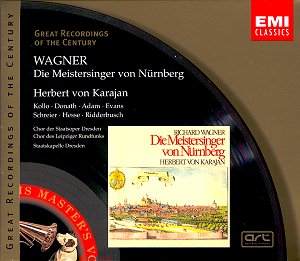 Composer: GUSTAV MAHLER (1860-1911)
Composer: GUSTAV MAHLER (1860-1911)
Work: Symphony No. 4 in G major (1899-1900)
Performers: Dame Margaret Price (Soprano), London Philharmonic Orchestra, Jascha Horenstein
Recording: Barking Town Hall, London, 23-24 November 1970
Label: Classics for Pleasure 5 74882 2
Duration: 59.25 minutes
Review Date: November 2001
In the pantheon of Mahler interpretations, Jascha Horenstein’s recording of the Fourth Symphony with the London Philharmonic Orchestra, now re-released by Classics for Pleasure, stands as a significant and oft-overlooked testament to the conductor’s interpretative depth. This performance, recorded in late 1970, offers an illuminating glimpse into Mahler’s most serenely optimistic symphony, one that juxtaposes sublime beauty with a haunting undercurrent of existential inquiry.
Horenstein’s approach to the First Movement unfolds with a refreshing sense of emotional restraint, eschewing the more fervent, bombastic interpretations often associated with Mahler’s symphonic oeuvre. The conductor’s nuanced reading revels in the symphony’s delicate textures, emphasizing the thematic material with a clarity that allows the listener to discern the intricate counterpoint and harmonic shifts that define Mahler’s style. This is particularly evident in the development section, where Horenstein’s slight hesitancy introduces a palpable sense of trepidation. The music seems to cast shadows, suggesting that beneath the work’s cheerful façade lies a complex emotional landscape—an idea that resonates with Mahler’s own struggles with mortality and meaning.
The second movement, marked “Andante,” showcases Horenstein’s rare ability to accentuate the dream-like quality of Mahler’s writing. Here, he proves adept at balancing distance and intimacy; his orchestral palette reveals an ethereal quality that enhances the work’s reflective character. The clarinet lines, buoyant yet tinged with nostalgia, shimmer under Horenstein’s baton, while the strings’ soft, fading phrases create a sense of walking away from a distant, cherished memory. This interpretative choice, while perhaps less emotionally immediate than some of his contemporaries—such as Kubelik or Kletzki—offers a cerebral beauty that invites repeated listening.
In the slow movement, Horenstein exemplifies his characteristic restraint, a choice that allows the music’s inherent simplicity to unfold organically. The initial tempo he adopts not only serves the melodic contours but also invites a contemplative atmosphere that resonates with Mahler’s intentions for introspection. The nuances in phrasing are finely drawn, allowing the listener to savor the unfolding of harmonic ideas. This is especially true in the passages of yearning and drama that emerge later in the movement, where the contrast between quietude and emotional intensity is rendered with striking clarity.
Dame Margaret Price’s contribution in the finale is equally significant, though her interpretative choices may evoke mixed responses. While her creamy-toned soprano brings a beguiling quality to the text, one might argue that her occasional penchant for expressive exaggeration detracts from the overall lyrical purity that Mahler demands. However, her ability to navigate the complexities of the vocal line and engage with the orchestra demonstrates a commendable partnership that concludes this performance with a sense of both resolution and wonder.
The recorded sound, remastered from its 1983 analogue roots, presents a marked improvement over earlier iterations, revealing a detailed sonic landscape where the woodwinds, in particular, stand out with clarity and presence. While some critics may lament the limited stereo spread compared to modern recordings, the transparency of the orchestral textures allows for a vivid appreciation of Mahler’s orchestration—an aspect that can often be obscured in more recent renditions.
Historically, this recording holds a notable position within Horenstein’s discography. As one of the earliest studio recordings of a Mahler symphony in stereo, it not only captures the conductor’s artistic vision but also reflects the zeitgeist of the period in which it was produced. Horenstein, a conductor who straddled the line between tradition and innovation, offers a reading that feels both grounded in Mahler’s Viennese roots and imbued with a modern sensibility.
In conclusion, Horenstein’s interpretation of Mahler’s Fourth Symphony is an essential addition to the canon of Mahler recordings. The delicate interplay between emotional distance and engagement, coupled with the rich orchestral colors, renders this performance a compelling exploration of one of Mahler’s most enigmatic works. For those seeking a thoughtful and richly articulated interpretation, this reissue from Classics for Pleasure should not be overlooked. It stands as a testament to Horenstein’s artistry and a vital historical document that continues to resonate within the broader landscape of Mahler’s symphonic legacy.



